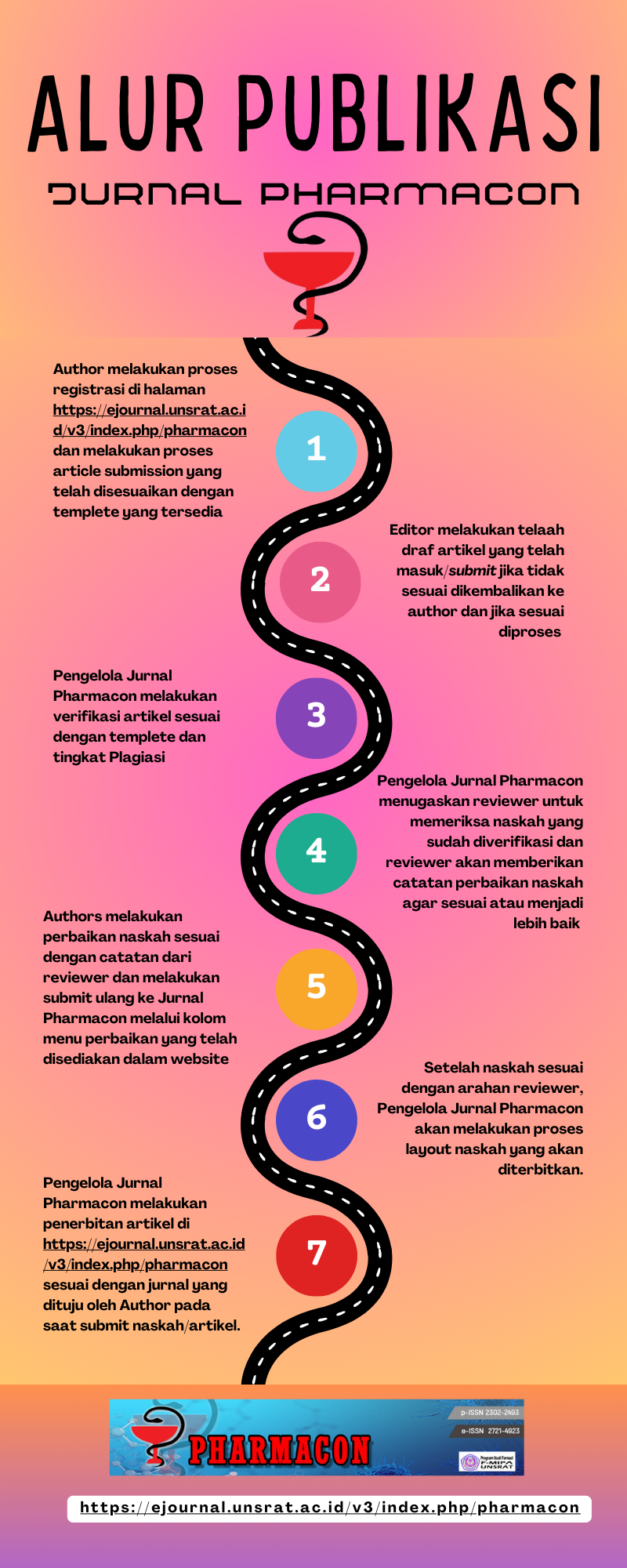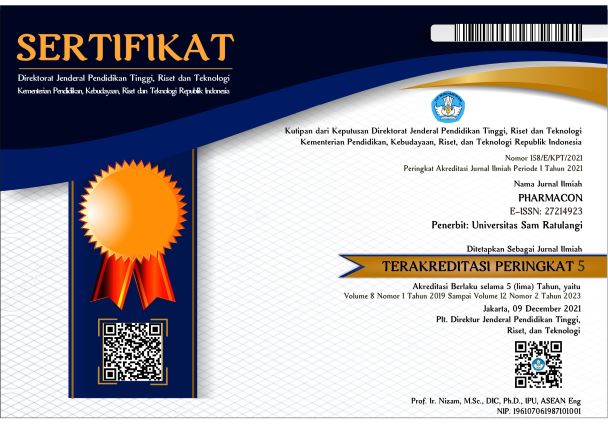ANALISIS ZAT PEWARNA RHODAMIN B PADA KERUPUK YANG BEREDAR DI KOTA MANADO
DOI:
https://doi.org/10.35799/pha.2.2013.2386Abstract
ABSTRACTRhodamine B dye in the form of a crystalline powder green or reddish purple, odorless, and
dissolves easily in bright red solution berfluoresan as textile dyes. Rhodamine B is still no
food products were found to contain rhodamine B dye such as crackers, sauces, ice and other
pastries. The purpose of this study is to investigate and determine the levels of rhodamine B
on crackers circulating in the city of Manado. Sampling sites crackers are 4 market in the city
of Manado is Tuminting Market, Market Paal 2, Market Market Bersehati 45 and 45.
Samples with ammonia to soak interesting rhodamine B dye using wool yarn, followed by
identification using thin layer chromatography (TLC) and then in detection with UV light 254
nm and 366 nm. The reading levels of rhodamine B using UV-Vis spectrophotometry. The
results showed that of the ten samples tested with three times obtained one positive sample
containing rhodamine B with an average concentration value of rhodamine B in a sample of
45 markets in the sword of 0.28 mg/ml. Based on these results, some crackers circulating in
Manado City Market unsafe consumed.
Keywords: Rhodamine B, Crackers, spectrophotometry and Thin Layer Chromatography
Downloads
Published
2013-08-01
How to Cite
Dawile, S., Fatimawali, F., & Wehantouw, F. (2013). ANALISIS ZAT PEWARNA RHODAMIN B PADA KERUPUK YANG BEREDAR DI KOTA MANADO. PHARMACON, 2(3). https://doi.org/10.35799/pha.2.2013.2386
Issue
Section
Articles
License
Authors who publish with this journal agree to the following terms:
- Authors retain copyright and grant the journal right of first publication with the work simultaneously licensed under a Creative Commons Attribution-NonCommercial 4.0 International License that allows others to share the work with an acknowledgement of the work's authorship and initial publication in this journal.
- Authors are permitted and encouraged to post their work online (e.g., in institutional repositories or on their website) prior to and during the submission process, as it can lead to productive exchanges, as well as earlier and greater citation of published work (See The Effect of Open Access)









